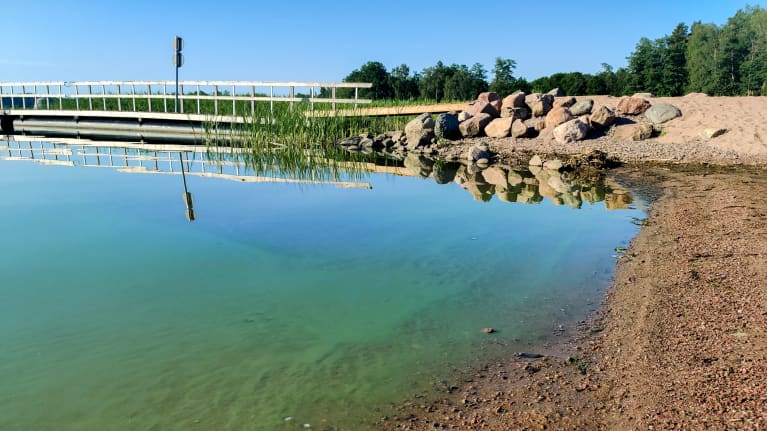There is less cyanobacteria, also known as blue-green algae, in Finnish lakes and coastal waters this week than last, the Finnish Environment Institute (Syke) said on Thursday.
The cooler, windier weather that has followed late June's heatwave has reduced the formation of algal blooms.
"However, surface blooms of cyanobacteria may again become more abundant once the weather warms and winds calm down. Consequently, future weather conditions will determine the algal situation for the rest of the summer," Syke researcher Kaisa Kraft said in a statement.
Southern waters warmer than usual
The only maritime areas with heavy blue-green algae in recent days have been one spot on the Helsinki island of Lauttasaari, one in Kaarina near Turku and one on the island of Utö.
There were also four locations on inland waters, mostly the same southern Finnish lakes where there have been heavy concentrations in recent weeks.
The average surface temperatures on lakes in southern and central Finland are now 18-22 degrees Celsius, about 1-3 degrees warmer than the long-term average for early July. On the other hand, in northern Finland lake surface temperatures are 1-2 degrees cooler than average, now in the 5-17C range.
Sea water temperatures range from 12 degrees in the northwest to 23 in parts of the south.
Keep kids and pets out of algae-infested water
Small amounts of cyanobacteria appear as green or yellowish particles in water. Narrow stripes of algae may drift onto shorelines. In calm conditions, cyanobacteria may form greenish or yellowish algal rafts.
If algae dissolve into tiny particles in the water when you touch it with a stick, it may be cyanobacteria.
According to Syke, water containing blue-green algae must not be consumed by people or animals, even after boiling.
Children and pets must not be allowed to swim in such water, and adults should also avoid doing so. Any person or pet suspected of being exposed to contaminated water should be washed thoroughly with clean water, the institute says.
